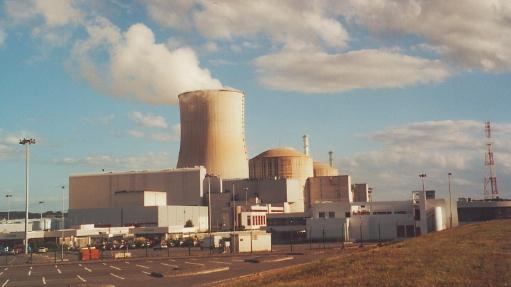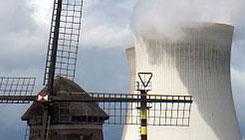Bracing for an industry-wide talent shortage as Baby Boomers plan their retirements, the nuclear industry is looking for technology professionals. “Retirements are creating a multitude of nuclear industry jobs, including IT jobs,” says H. L. Dodds, a professor emeritus and former head of the Nuclear Engineering Department at the University of Tennessee. “Just about everyone in the nuclear industry uses IT on a daily basis to communicate: person-to-person, person-to-machine, machine-to-person and even machine-to-machine,” he explains. “Thus, it’s of the utmost importance to have IT specialists available 24/7 at nuclear facilities to maintain current IT capabilities and to assist in making IT improvements going forward.”
Click here to find nuclear power-related IT Jobs. The industry has been
beefing up its pipeline of talent industry-wide, according to Elizabeth McAndrew-Benavides, senior manager of strategic workforce planning at the Nuclear Energy Institute, a policy and advocacy organization. Thirty-nine percent of the workforce at the country’s 100 nuclear power plants will be eligible to retire by 2018—roughly 20,000 people, McAndrew-Benavides says. That doesn’t count government jobs, including those at national labs and companies that service nuclear plants such as
GE, Areva and Bechtel. And with five new plants under construction—two in Georgia, two in South Carolina and one in Tennessee—even more workers will be needed.
Where the Jobs Are
A lot of utilities’ technology jobs are outside of their nuclear divisions, and overall the electric power industry has more than 1,000 IT openings posted, says McAndrew-Benavides. Among them are
applications and
Web developers,
computer systems analysts,
computer engineers, nuclear real-time systems analysts and
information security analysts. However, “there’s a misperception that all engineers at nuclear plants are nuclear engineers. They’re not,” notes NEI spokesman Mitchell Singer. “The majority of them are not. Their training is in mechanical, electrical, chemical or computer engineering,” The industry hires about 1,400 engineers a year, about 25 percent of them in computer, electrical, instrument and controls engineering, dealing with computer chips and electricity, McAndrew-Benavides reports. Though reports of threats against critical infrastructure would seem to make cybersecurity a growing specialty in the nuclear industry, those jobs are seldom filled from the outside. “You need to learn something about the company before your job is to protect it. So a lot of times we don’t post for externals to come in for security,” says McAndrew-Benavides. “We’ll hire someone on
help desk or another IT position, they’ll get a master’s while working for us, then they’ll get promoted or slid over into one of those (security) jobs.”
Career Paths
IT pros in the nuclear industry do have a career path to follow into the executive ranks if they wish. After completing a
Senior Reactor Operator class and specialized internal training of 18 months to two years, candidates sit for an examination to gain SRO licensure. “That’s really the key to upper management in the nuclear industry. IT professionals have done this,” observes McAndrew-Benavides. “They might not even think they could become a chief nuclear officer.” “There’s a lot of potential in these jobs. They’re safe, they’re not going to be offshored, they’re stable and they pay really well,” she adds. What about pay? According to the North American Young Generation in Nuclear, members’ starting salaries were in the $60,000 range. Those with 10 years’ experience reported pay of about $113,000. As part of the push to recruit more talent into the industry, more training programs are being offered. For example, the Department of Energy is awarding $5 million
for 41 undergraduate scholarships and 33 graduate fellowships to students in nuclear energy-related engineering and science programs. Meantime, the separate
DOE Scholars Program provides stipends of up to $650 a week for students in related fields—including computer science and information technology—to learn more about its mission and operations.
Related Stories
Image: Wikimedia Commons 

